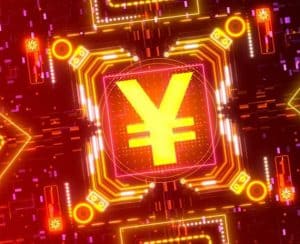Join Our Telegram channel to stay up to date on breaking news coverage
Shenzhen, a major Chinese city, is gearing towards another giveaway of 20 million in digital yuan, worth around $3 million at the time of writing. This stands as part of China’s real-life testing of its central bank digital currency (CBDC), going by the name of Digital Currency, Electronic Payment (DC/EP).
Another Digital Yuan Lottery Launched
The announcement of this new giveaway was made by Shenzhen’s government on New Year’s Eve, with 100,000 red packets available to be won. These red packets will, like the previous giveaways, be given out through a lottery to local residents. Each red packet will be worth 200 digital yuan, which is around $30 at today’s prices.
The winners of this lottery will only have a limited time to spend said digital yuan, as the announcement stipulates. Lottery winners will have between the 7th and 17th of January to make their purchases with these red packets, but will be allowed to shop at over 10,000 enterprises within Shenzhen, including restaurants, shops, and supermarkets.
A Bit Of History Over China’s DC/EP
Shenzhen was the location of China’s first city-wide testing of the digital yuan, doing so through the first lottery giveaway of its kind. That lottery was allocated to 50,000 winners, who would receive a collective $1.5 million in digital yuan. Back then, only 3,000 local stores were made available for the use of the lottery.
Back in December, Suzhou, another prominent Chinese city, saw itself double down on China’s efforts with the digital yuan. Suzhou’s efforts, in particular, had multiple aspects be far more extensive in scale than Shenzhen’s first testing round.
This testing in Suzhou ended on the 27th of December, 2020. According to a WeChat Post, Suzhou’s government reported a total lottery winner count of 96,614 who had collected their digital yuan. The group had spent almost the entirety of the $3 million in free money, as well.
Some Kinks In The System
As that post had stipulated, the digital yuan consumption showed that 55% of it was spent by way of offline stores. The rest were done through JD.com, a Chinese e-commerce platform. 536 people took part in testing the offline touch-to-pay feature in this previous testing round, as well
The latest round of testing being done in Shenzhen won’t hold some of the features that was boasted within the Suzhou testing, however. Key examples of this was offline touch-to-pay functionalities and online payment options. Beijing Business Today, a media outlet, gave out a report about the matter explaining as to why this was happening.
According to the report, loopholes and technical bugs were discovered within the offline touch-to-pay function when it was enacted at the Suzhou test. As a result, the latest Shenzhen test won’t have this technology adopted, at least until all the kinks are worked out.
Join Our Telegram channel to stay up to date on breaking news coverage



